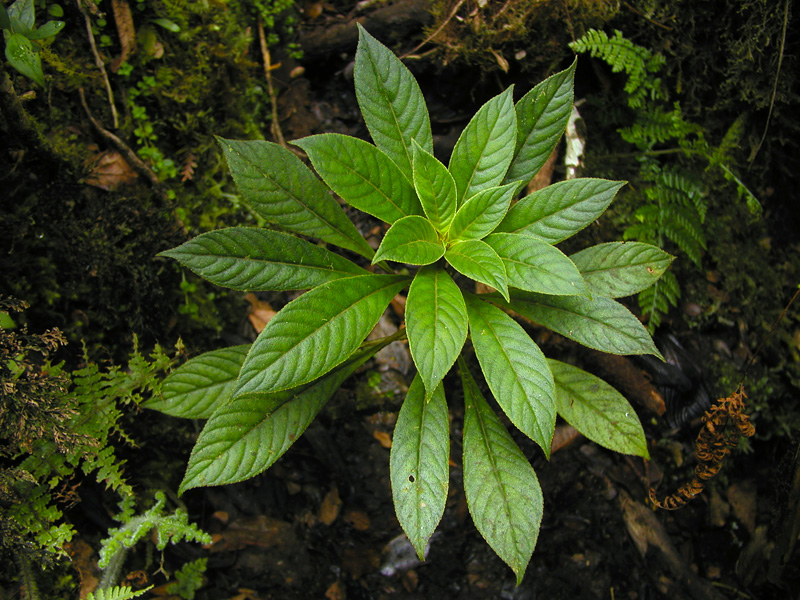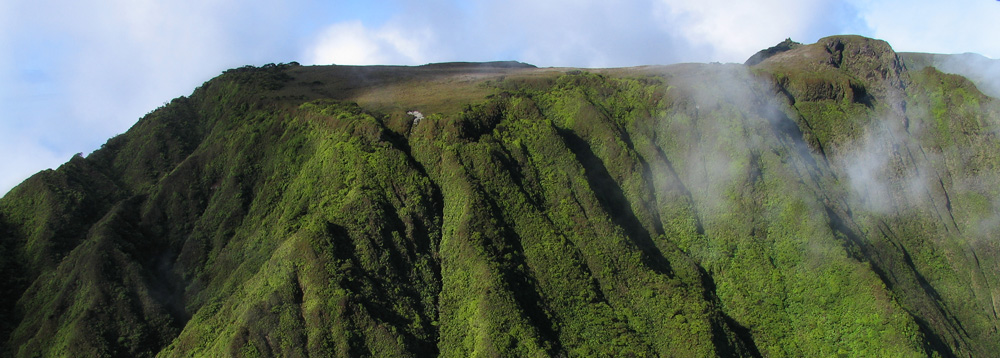
Flights to the Summit of West Maui

Above: At the summit of the West Maui Mountains. The sharp hill just visible in the distance to the right is the highest point, Pu'u Kukui, at 5,788 feet. The flat area at center left is one of several highland bogs, sensitive locations brimming with rare species.
All of the images on this page are photographs - there are no paintings featured here.
As a volunteer with the Nature Conservancy of Hawai'i for several years, I've had the opportunity on three occasions to fly by helicopter to restricted areas near the 5,000-foot summit of West Maui, for the purpose of contributing to the management of the Kapunakea Preserve. Rainforests and highland bogs are the treasures of this protected land, one of the richest and most unique biological areas in the world, requiring defense against the ruinous influence of foreign plants and animals which threaten to destroy a remarkable ecosystem that has flourished here for millions of years.
My visits to the West Maui summit have been among the most inspiring adventures that I've experienced in Hawai'i. The flight over the mountains and valleys is a dream-like experience, offering simultaneous extremes of terror and enchantment - the helicopter is treated roughly by the wind, all the while passing within such alarming proximity to the landscape that it seems as if disaster should result at any moment. But the spectacular views provide a distraction from these psychological discomforts. The terrain of the West Maui Mountains is so breathtakingly beautiful that it seems almost impossible to believe - wind and water have worked over the eons to grace the valleys with an erosional texture as complex as wrinkled tin-foil, and the great canyons are often separated by little more than wickedly sharp ridges.
The traditional Hawaiian name for the West Maui Mountains is Mauna Kahalawai, and the summit is called Pu'u Kukui - literally translated, it means "Hill of Light", although it's an unexpected title for a place that's obscured by dense fog more often than not. Here, the land is covered with a remarkable bog, a sort of natural sponge where native plants grow upon a soft, muddy surface, perpetually saturated with enormous amounts of water. In these windswept bogs, the plants are so miniaturized that they seem designed for a doll-house world - even the familiar Lehua tree, which grows as a grand canopy tree in forests at lower elevations, has here adapted itself to bog conditions by becoming nothing more than the tiniest sort of "bonsai," with all the common features of its larger relatives, including the pale bark and the bright red bottle-brush flowers, but all on a scale so reduced that an ancient specimen may be no more than a foot tall. The bog is a living cushion of such plants, all growing so tightly packed together that the soggy ground is completely hidden from view.
Unusually clear weather prevailed over the mountains during each of my visits, offering photo opportunities of rare quality in a place that's frequently wrapped in thick clouds. The photos below offer views of the West Maui Mountains as seen from the helicopter, as well as shots of the bog, the forest, and some of the unusual plants that exist there.
These shots have been gathered from a collection of images captured over many years; some of the earliest images were taken with a traditional film camera, while later shots were derived from digital cameras in the early stages of that technology, and still later ones came from much better digital camers. As a result, image quality varies quite a lot on this page.
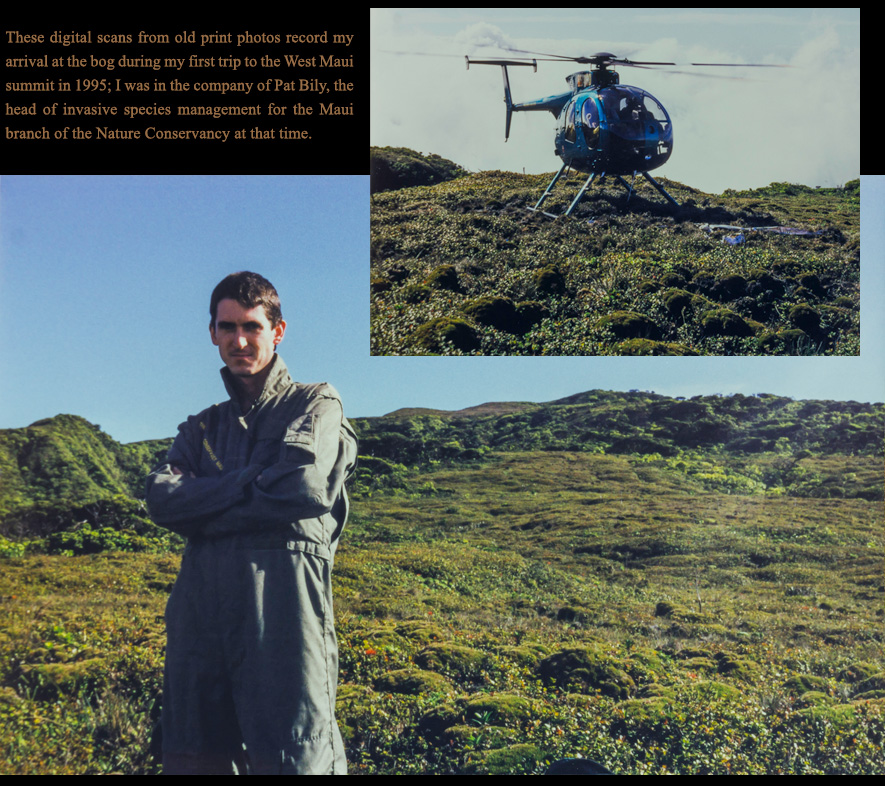
In August of 2005, I also flew over the summit in an ultralight owned by Kula resident Dwight Mounts. He took me for a really magnificent tour over the mountains. (I've since learned that Dwight no longer maintains his flight license, so he can't provide ultralight tours at this time).
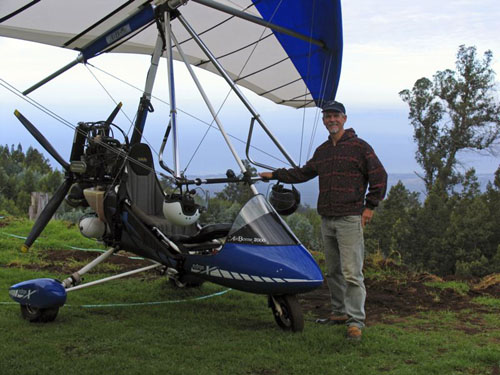
Above; Dwight Mounts and his remarkable flying machine
Yes, I actually did get in this thing. The ultralight is simply a hang-glider with seats and a propeller. It can glide quite confidently even if the engine is turned off, and it has a parachute for really severe emergencies (in case of structural damage to the wing) - all of which renders this little aircraft safer than a helicopter. Calm, windless conditions are preferable, however, so the early morning hours are the best for flying. With no surrounding structures to impede your view, a ride in this machine is similar to riding a motorcycle. Except that you're thousands of feet above the ground, of course. My best aerial images of West Maui were captured in this way, and several of them are featured on this page.
In the Air
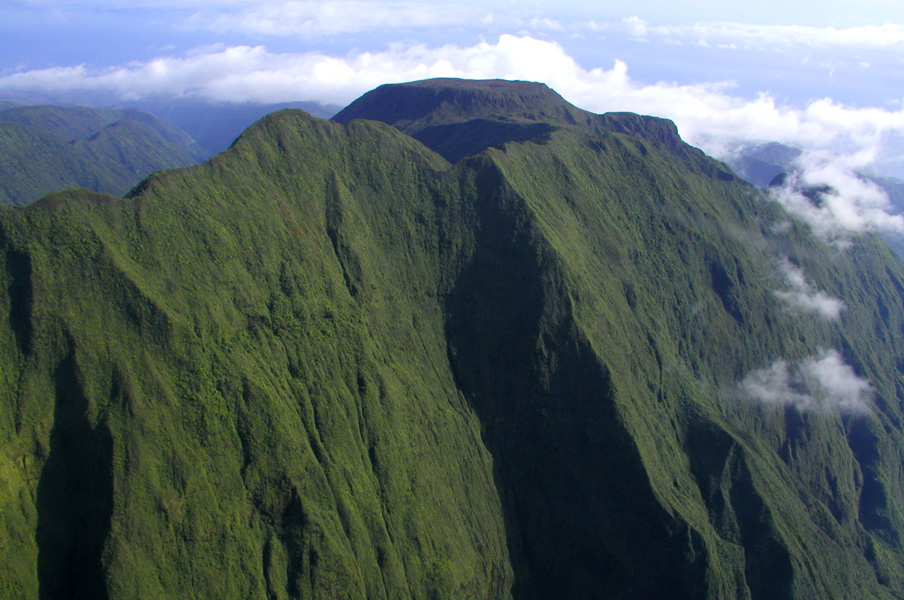
Sheer cliffs along the north wall of the massive Waihe'e Valley.
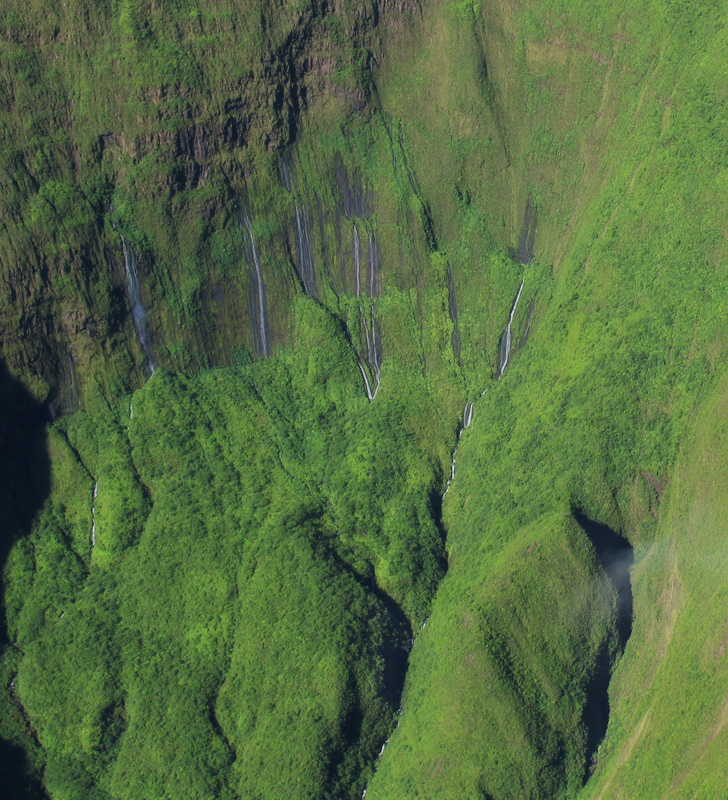
Above and below: cascades on the Wall of Tears, in Waihe'e Valley. These spring-fed waterfalls flow continuously.
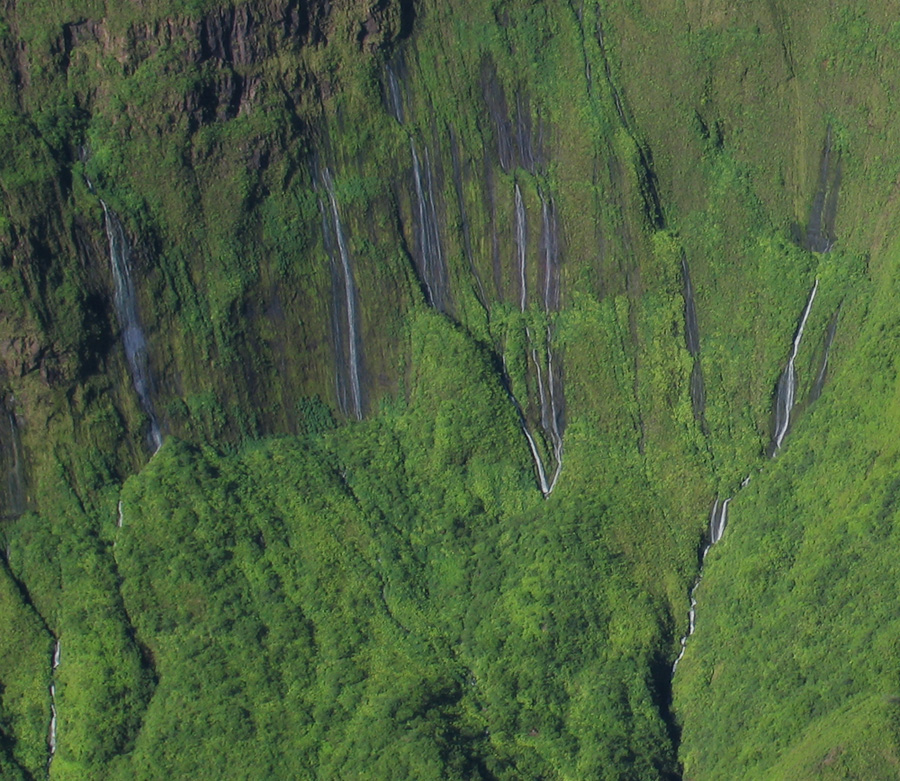
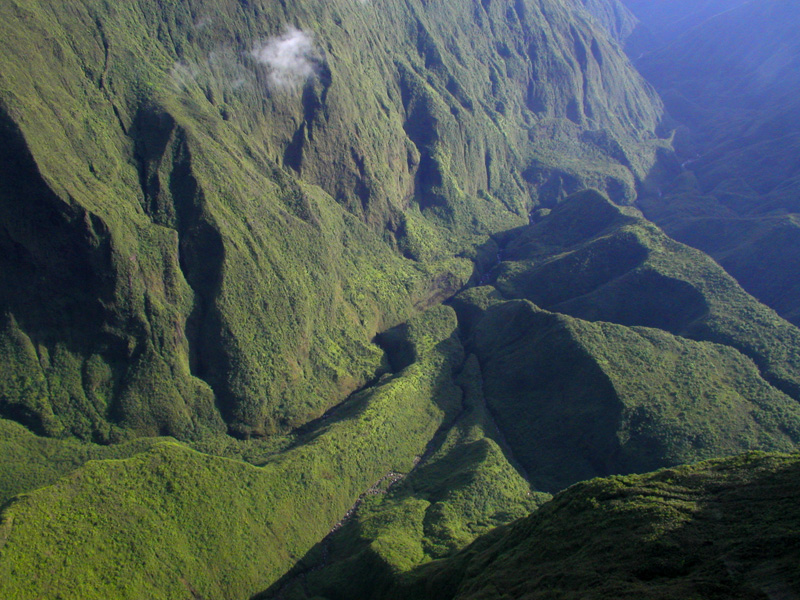
Above and below: the intricate floor of Waihe'e Valley, carved by numerous streams.
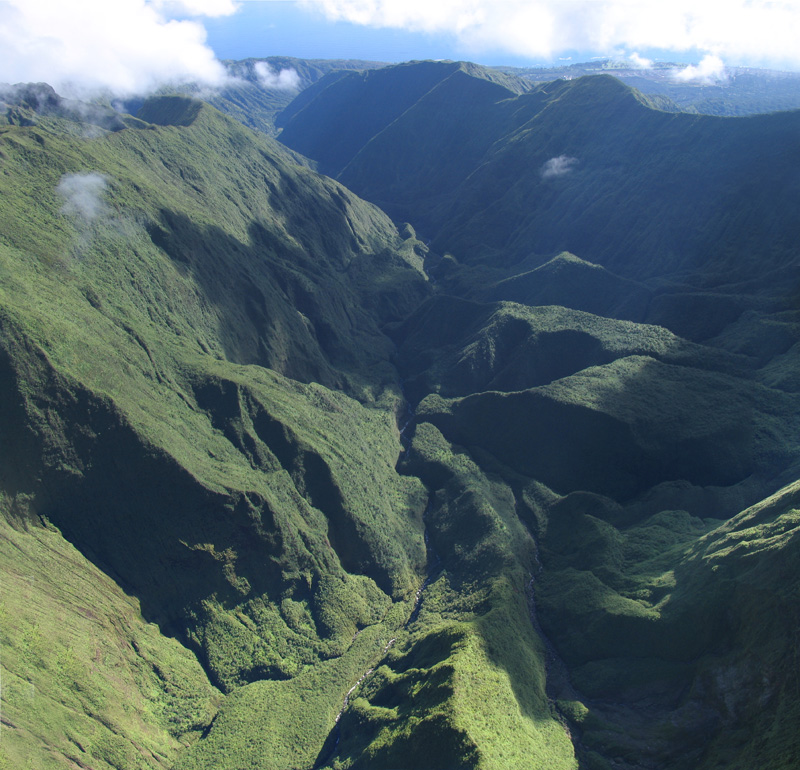
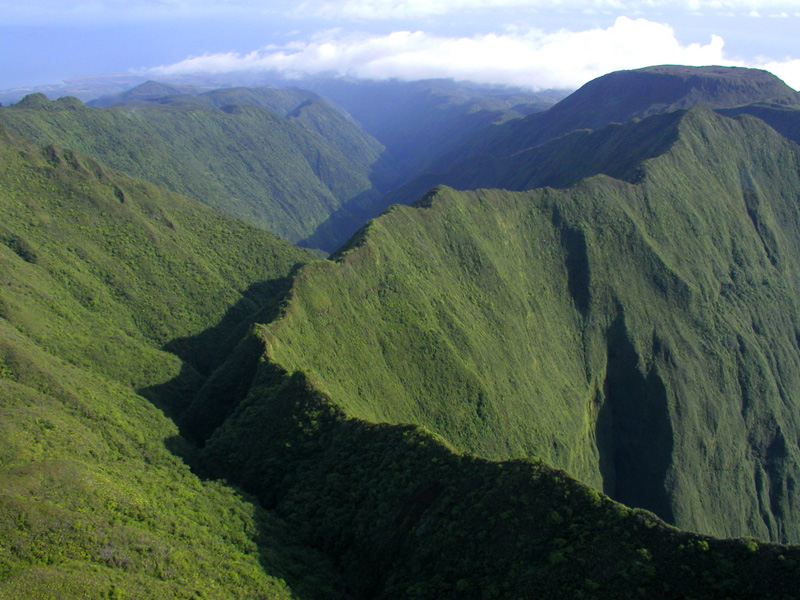
Above and below:
Clearing the ridge at the far end of Waihe'e Valley, which opens to the right.
Receding into the distance is another large valley, Honokohau.
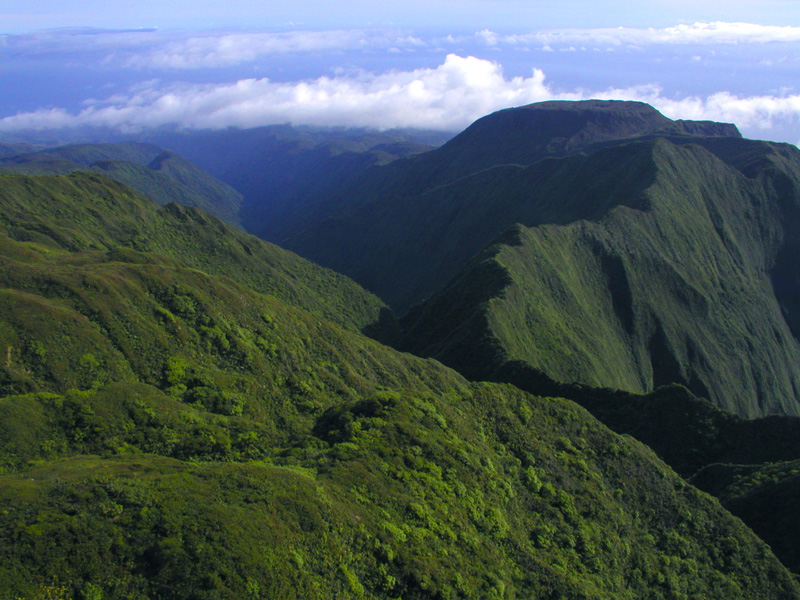
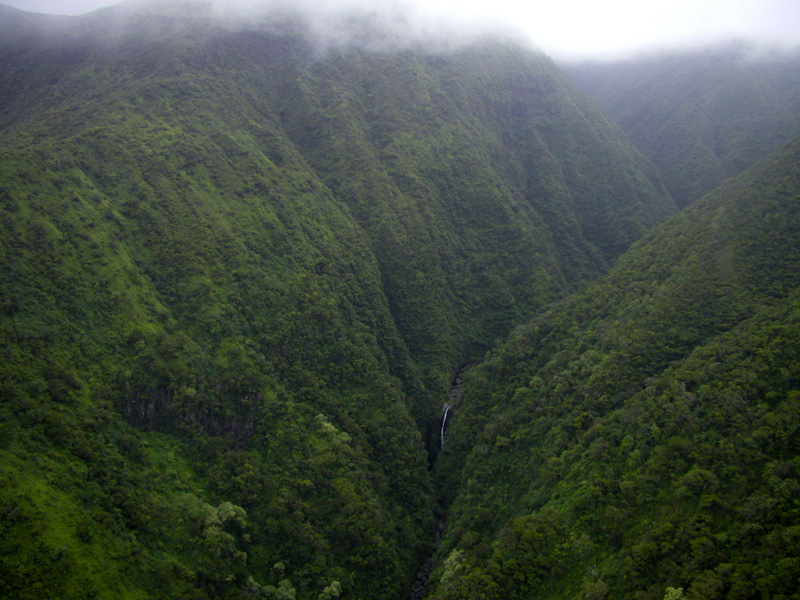
A cascade in an anonymous gulch somewhere south of Kahakuloa Village.
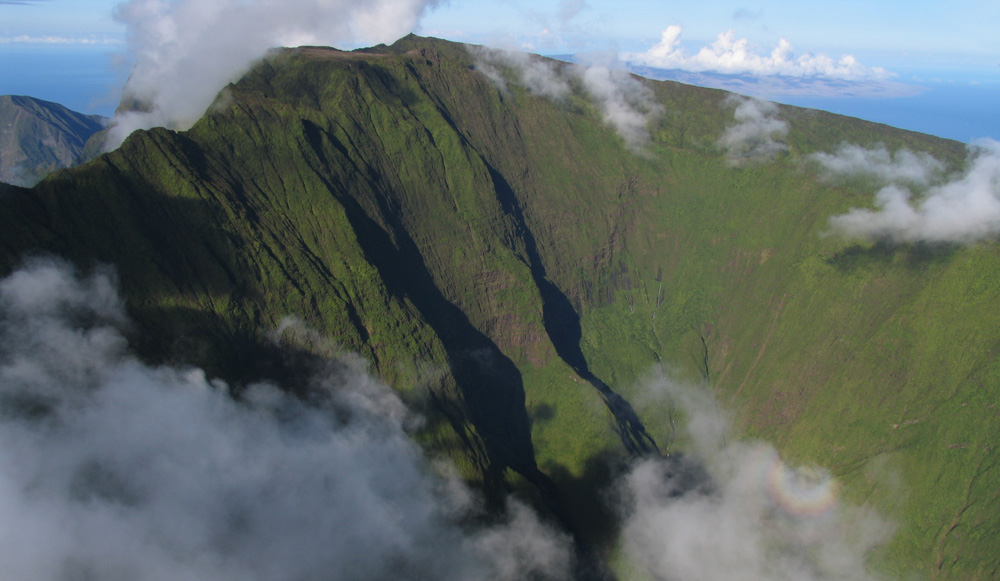
Above: the rear wall of Waihe'e, with the summit visible at center left.
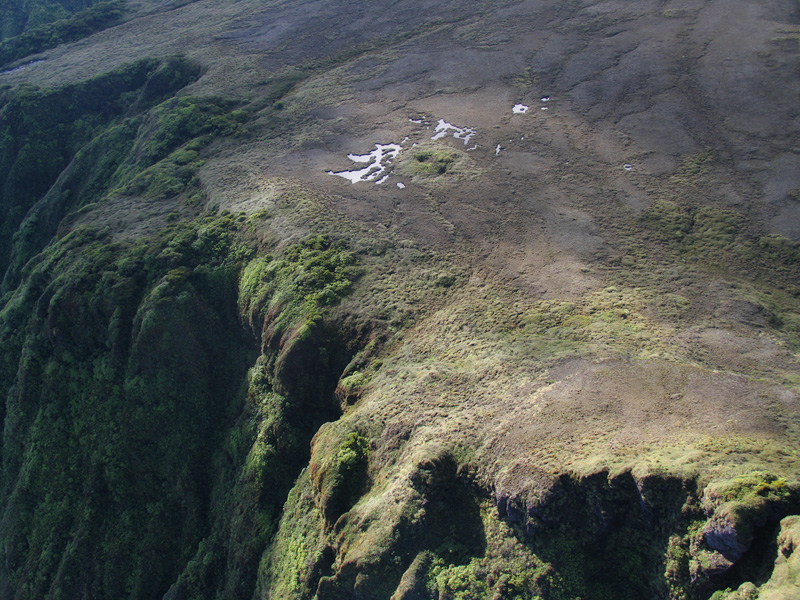
Standing water in one of the summit bogs.
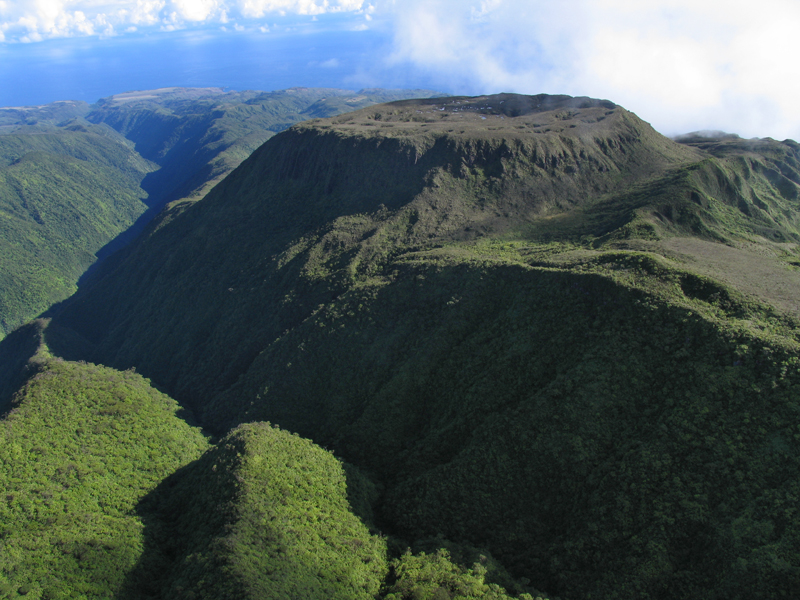
Above and below: Mount Eke is an isolated plateau marking the site of a volanic cone that has long since eroded away.
Although detached from the bogs at the true summit, this inaccessible peak shelters the most pristine bog on Maui.
A true lost world, Mount Eke is rarely, if ever, visited.
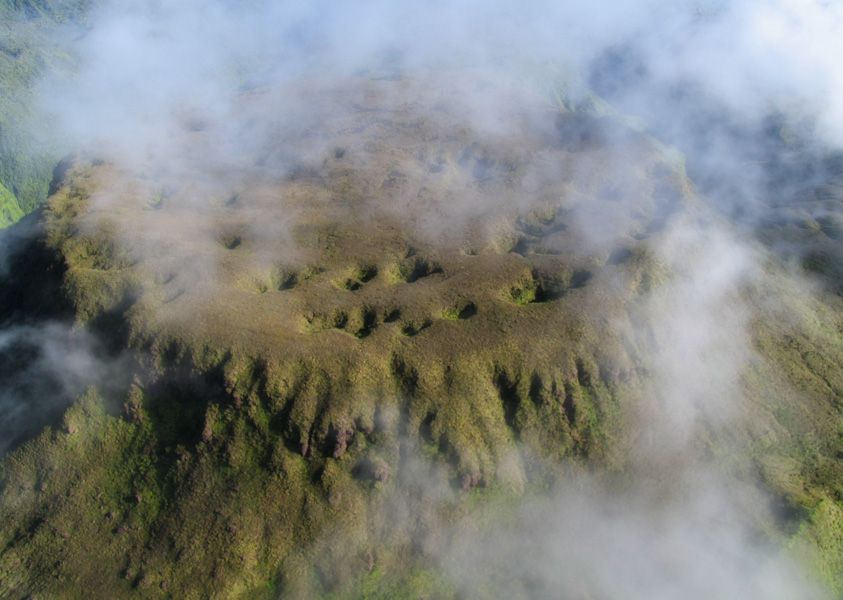
On the Ground
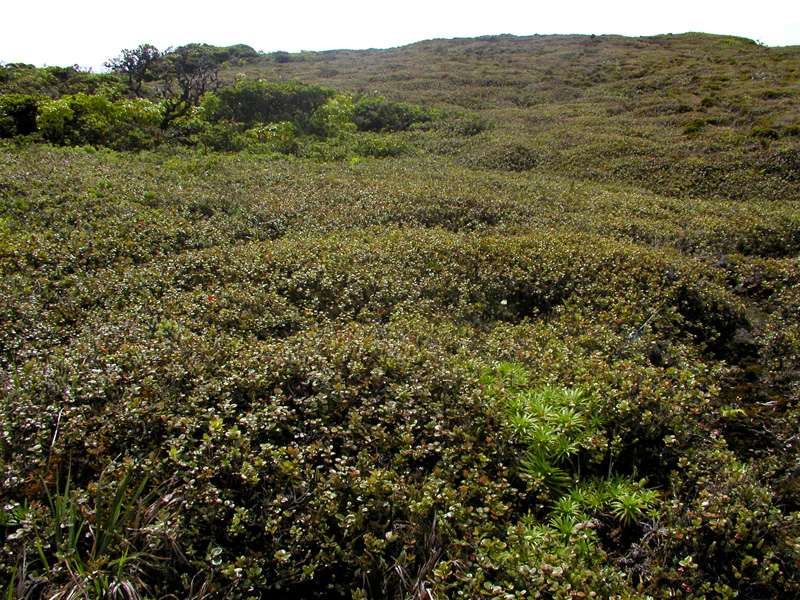
Standing in Kapunakea Bog, not far from Pu'u Kukui. The bogs cover patches of relatively level ground between ravines, while the ravines are occupied by the taller vegetation and trees of typical Hawaiian rainforest.
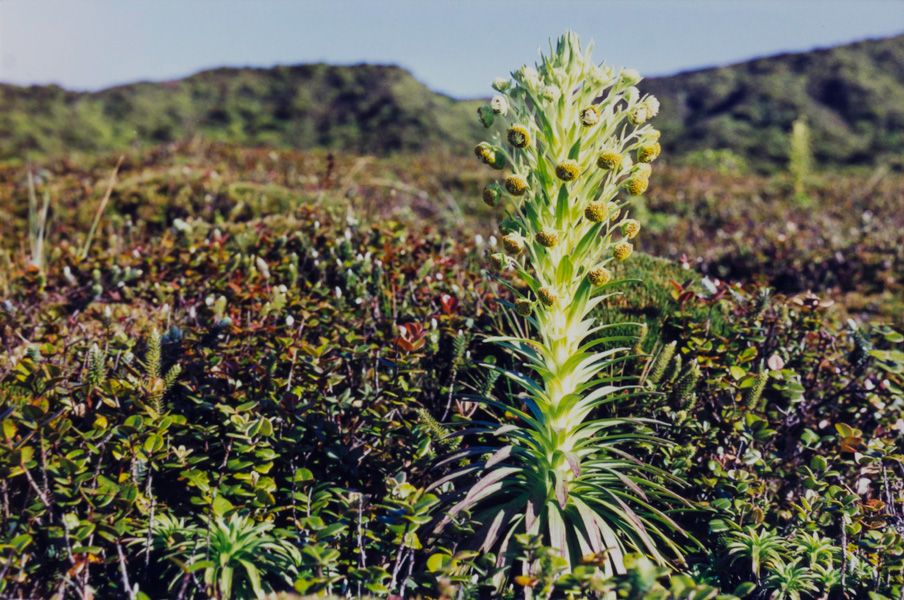
A rare Greensword, closely related to the better-known Silverswords of East Maui.
I was fortunate to find one of these blooming during my first visit to the bogs in 1995.
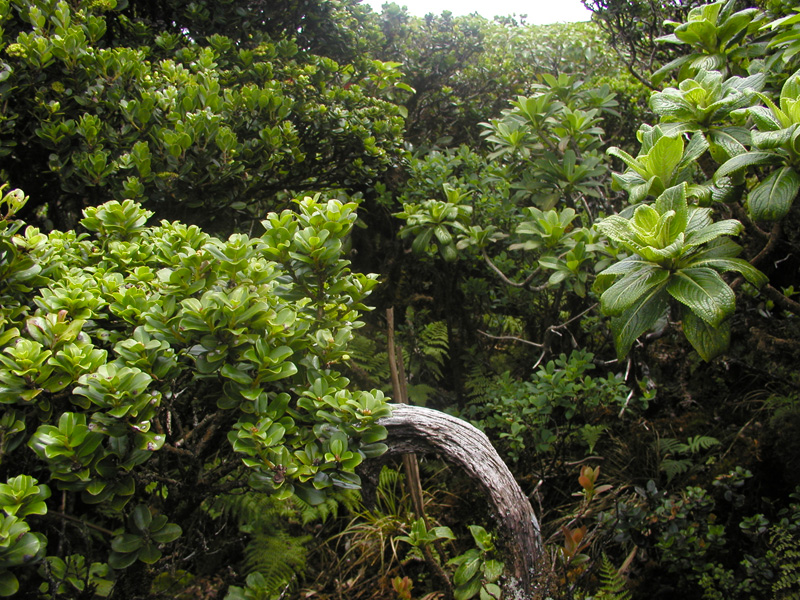
Above and below: travelling downhill from the bogs, the forest grows in stature, and soon becomes more like the canopied rain-forest to be found elsewhere in Hawii.
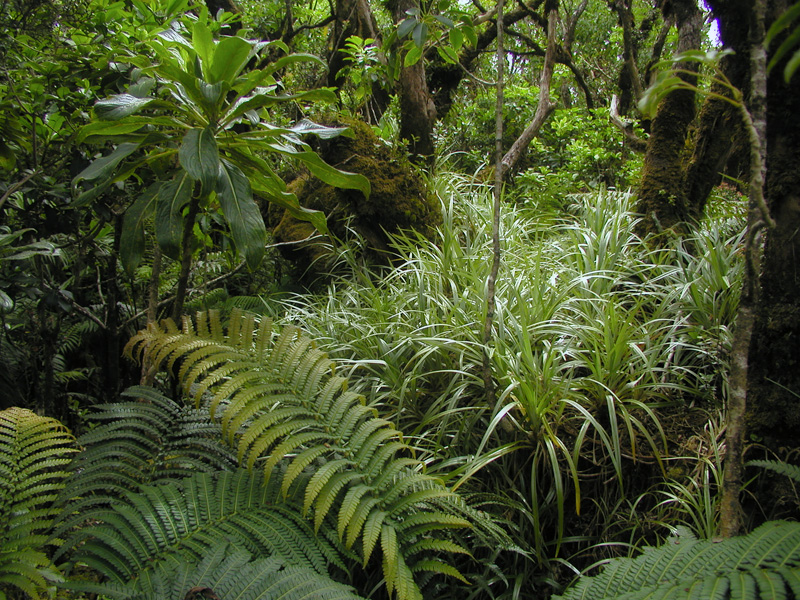
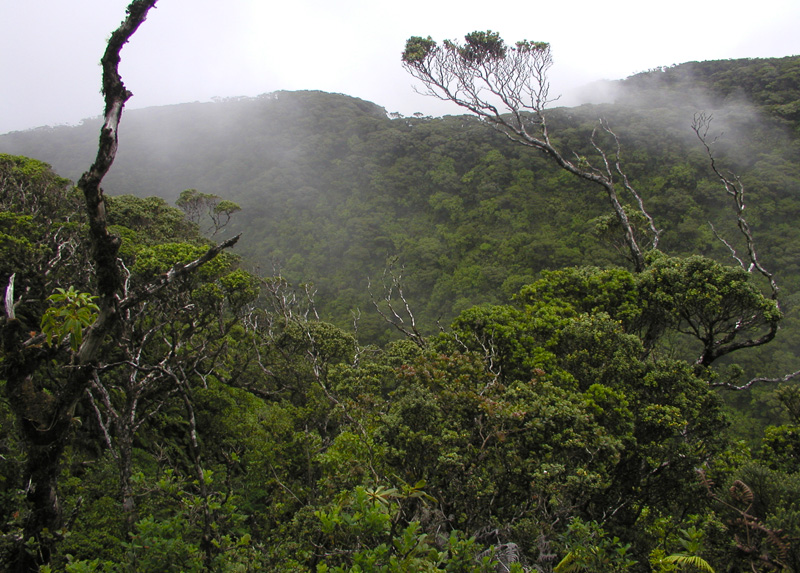
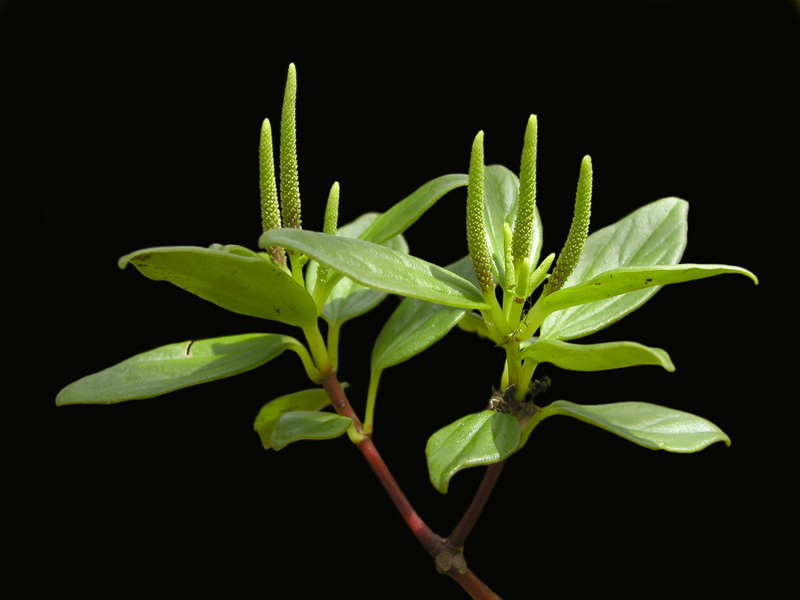
Peperomia, a uniquely Hawaiian variety of the familiar plant that produces edible black pepper.
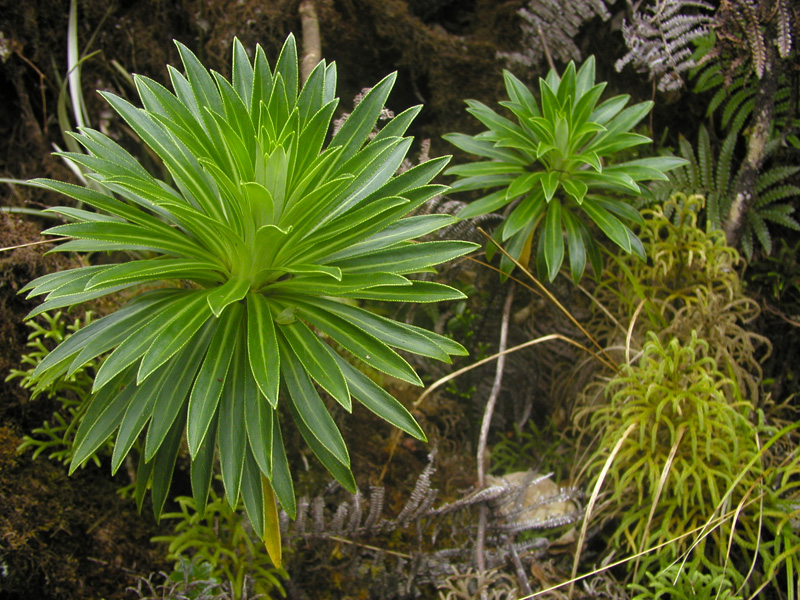
Lobelia gloria-montis. The Latin name means "glory of the mountains,"
in honor of the beautiful flower stalks which emerge from the top of these plants.
Sadly, they weren't flowering during my visit, but they were beautiful nonetheless.
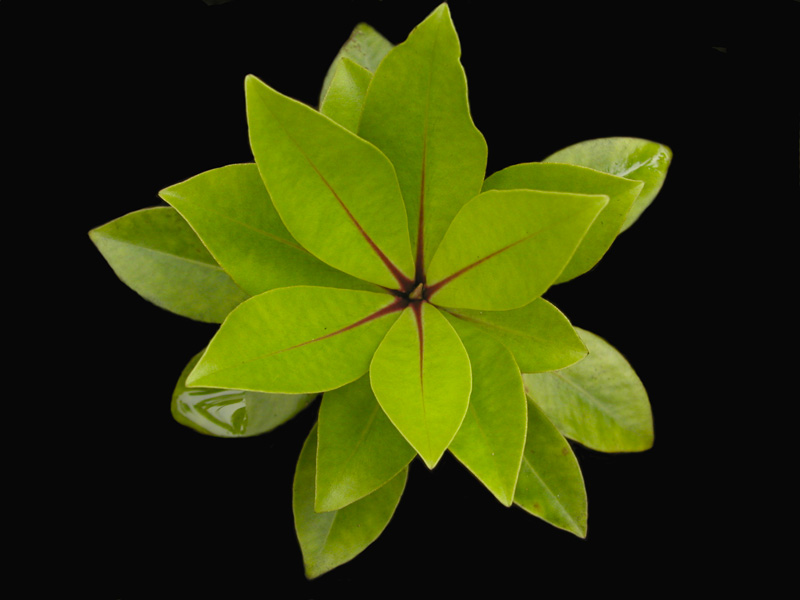
Kolea Lau Nui (large-leaved Kolea) - this species is easily identified by the prominent red midrib in the leaf.
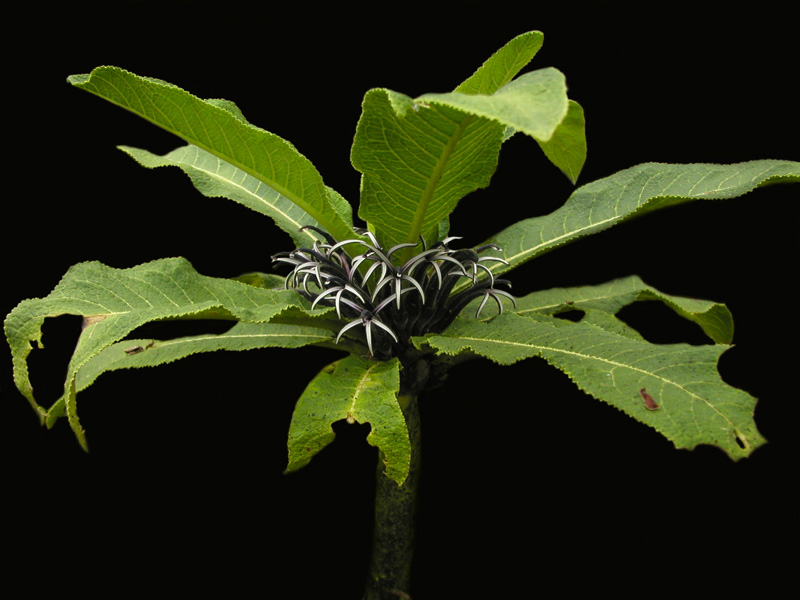
Above:
Cyanea macrostegia, one of the many spectacular lobelias of Hawai'i.
Below:
A close-up shot of Cyanea's bizarre flowers.
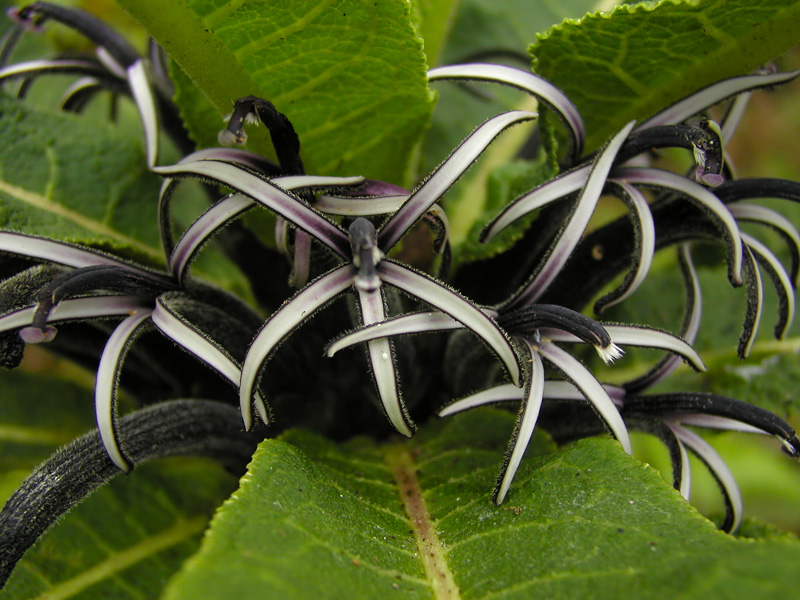
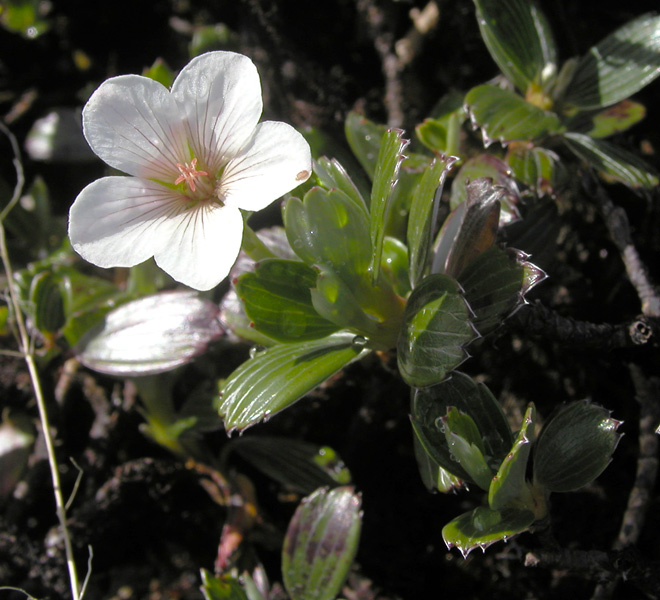
A rare Geranium, found only in the bogs of West Maui.
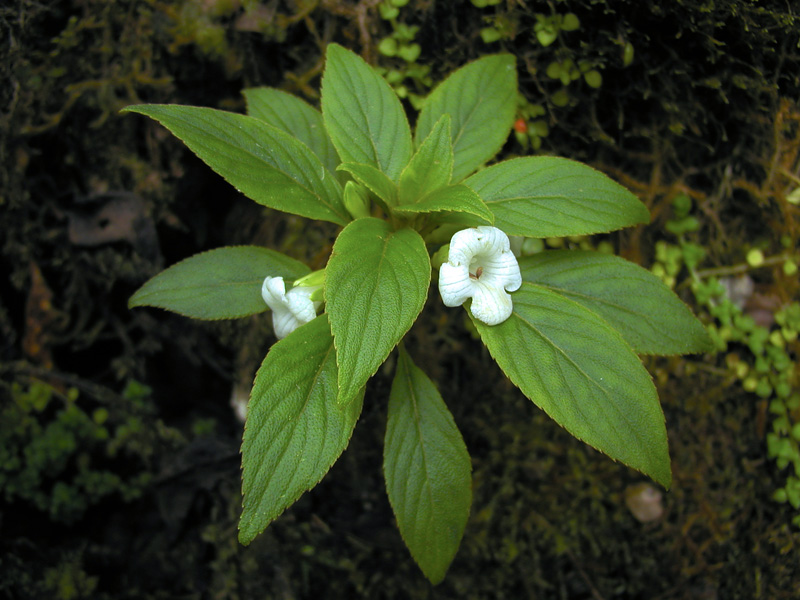
Above and below:
Two species of Cyrtandra, related to African Violets.
These plants are represented in Hawai'i by many unique species found only in the Hawaiian Islands.
